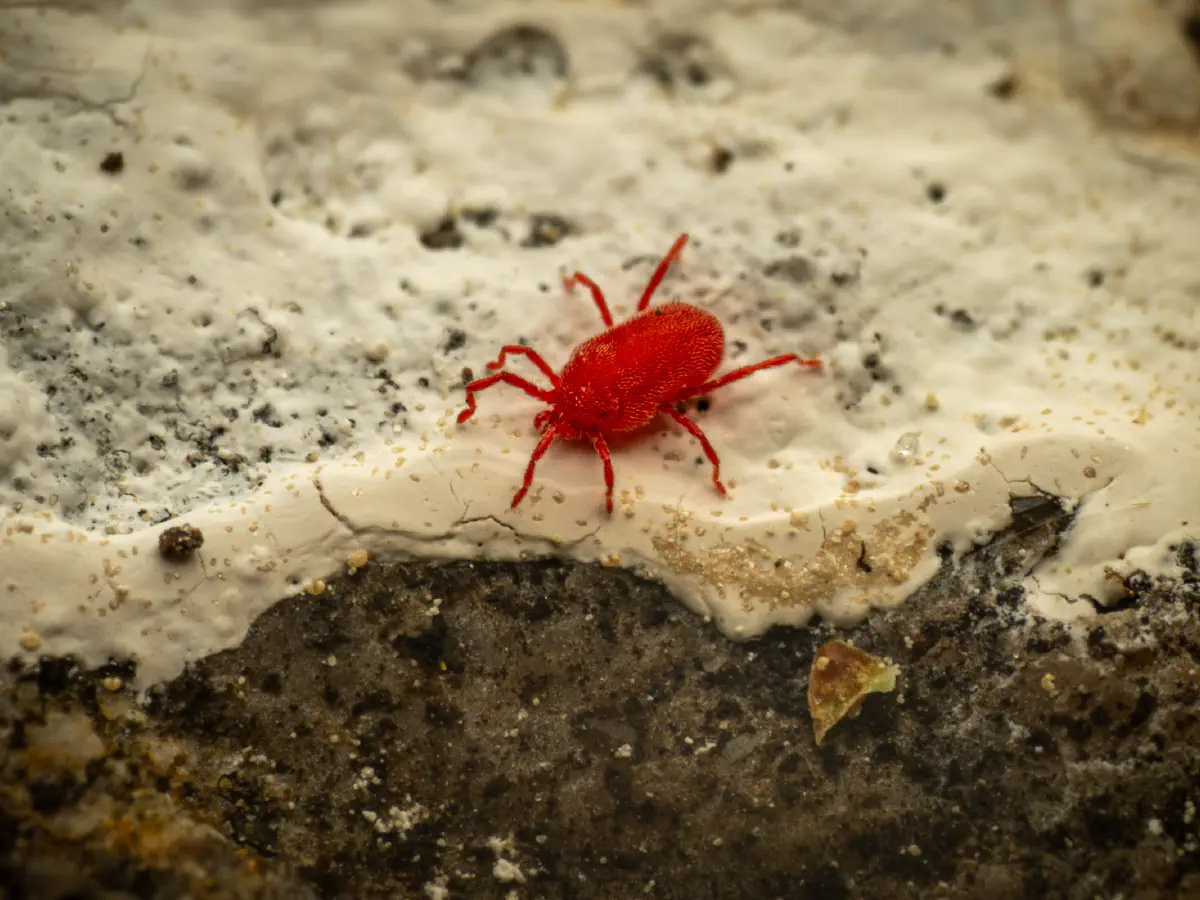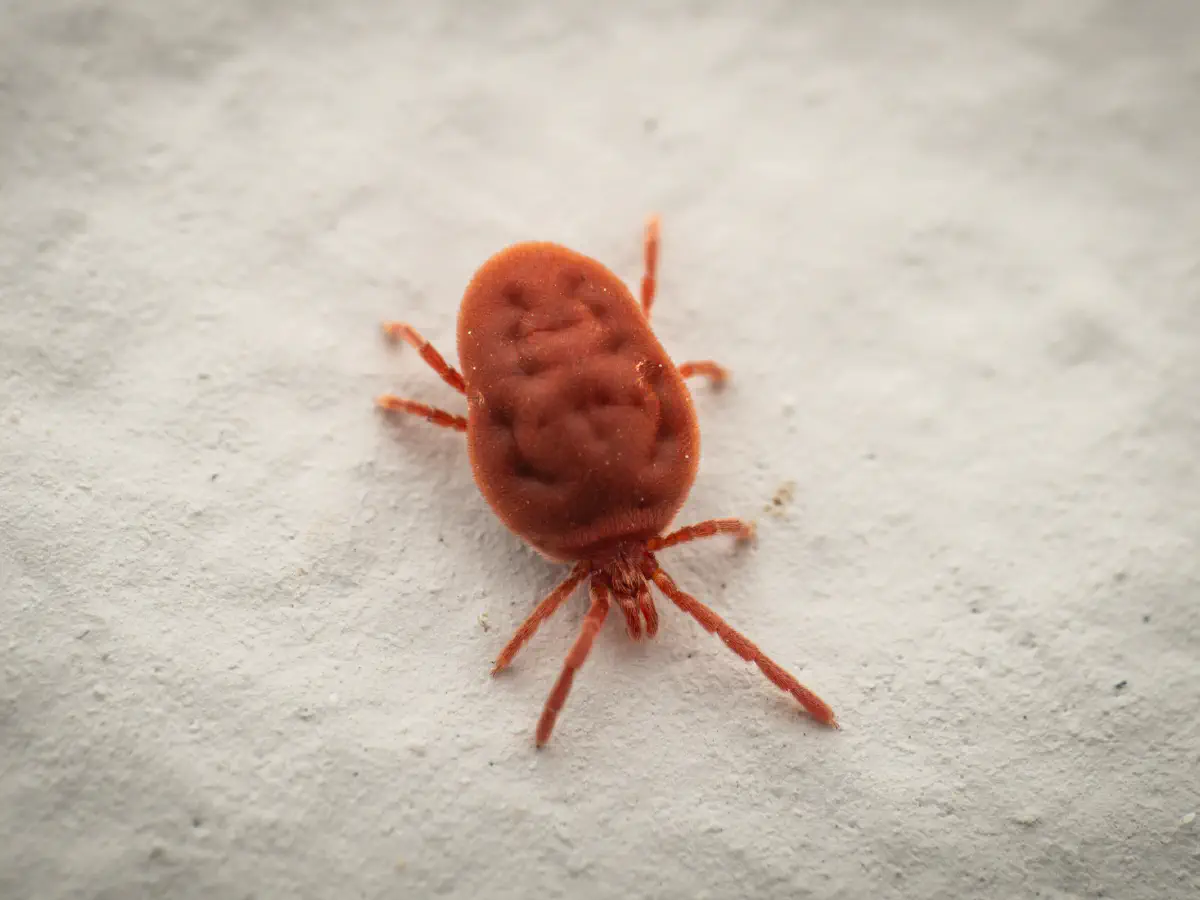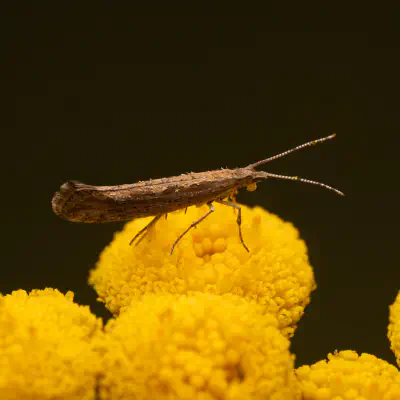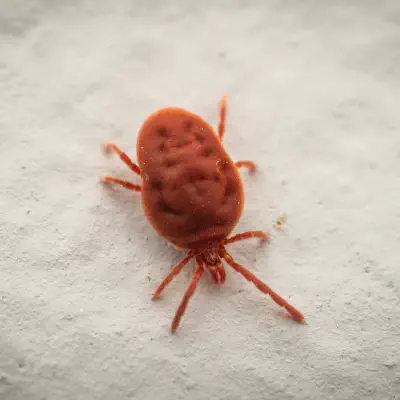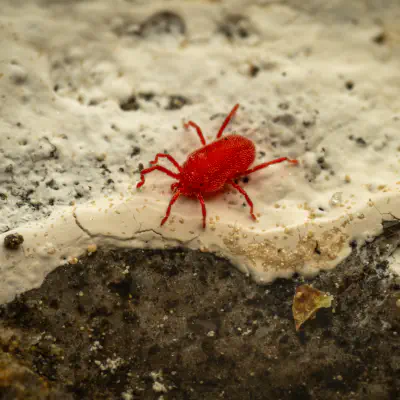This species is one of the largest mites in northern temperate zones, with a body length of about 4 mm (just over 1⁄8 inch). The soft, brightly red body is covered with fine hairs, giving it a velvety appearance. The small eyes are located on stalks. They have scissor-like chelicerae and their pedipalps are used as touch organs. Its bright red color results from carotenoids, warning predators about the toxicity of the mite (aposematism). Almost nothing
is known about the toxic substances used, but they are probably contained within the integument. The specific epithet is derived from Ancient Greek ὅλος, holos, "whole" and σηρικ-, sērik-, "silken".
